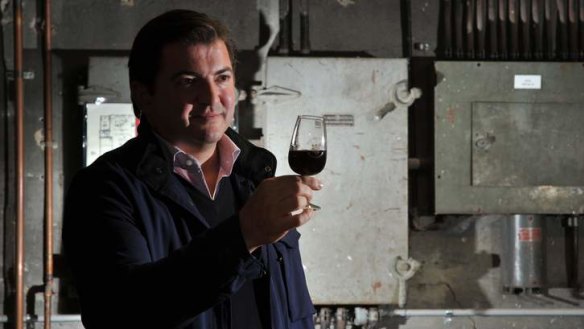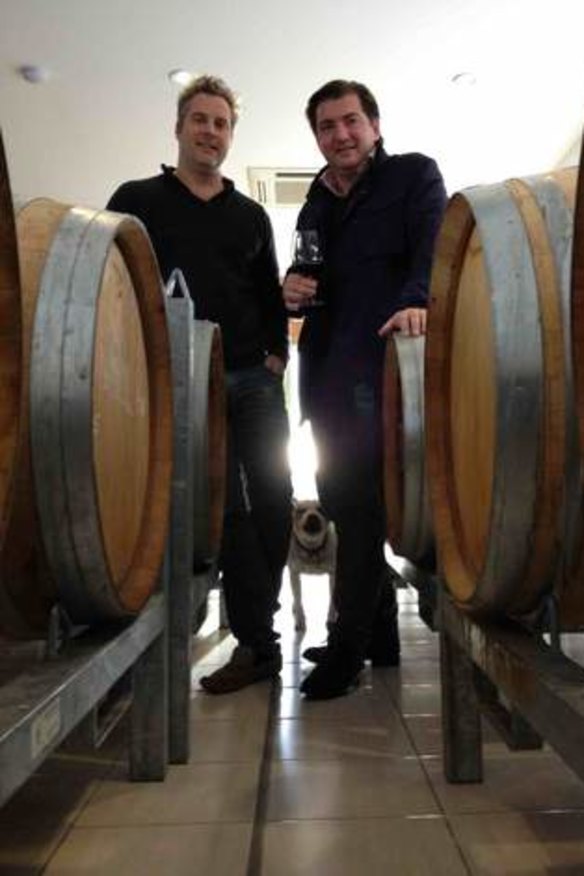Thrills aplenty
Matthew Jukes doesn't hold back in a tasting of Canberra wines, and for the most past he's entranced, <b>Kirsten Lawson</b> writes.

Canberra winemakers welcomed Matthew Jukes to their cellar doors recently, no doubt with some trepidation about the judgment of Britain's leading expert on Australian wine.
Jukes is a big champion of Australian wine, describing Australia as the second most important winemaking nation in the world next to France, and he's an influential voice whose nod of approval can be very useful indeed.
He was here to choose wines for a Canberra fund-raising dinner to be held in November, and we accompanied him on his cellar-door tour of Gallagher, Eden Road, Ravensworth and Clonakilla, with another group on his agenda for the following day.

Some of his highest praise went to Nick Spencer at Eden Road, whose wines he said were spectacular and thrilling. "I love them all, all of them, just brilliant," he said, adding: "Eden Road wines have imperfections, which makes them more beautiful."
Spencer has a big focus on Tumbarumba, where he has started making single-vineyard chardonnays and pinot noirs. His latest-release chardonnays are ''Maragle'' from a lower vineyard, at 430 metres, and ''Courabyra'' from 750 metres (both $50). He ferments the grapes from the lower, earlier-ripening vineyard in barrels and the higher-altitude wine in stainless steel, emphasising the differences in the fruit.
Jukes loved the distinctive character in each of these wines. In comparison with Spencer's wines, other top-shelf chardonnays can feel ''corporate'' and ''shiny'', he said.
Ultra-clean chardonnay can be thrilling but not memorable. I compare it to a supermodel - boringly perfect.
''Ultra-clean chardonnay can be thrilling but not memorable. I compare it to a supermodel - boringly perfect. Little scars, moles and wrinkles and other interesting details can make natural beauty even more alluring and this is definitely true of chardonnay - wild ferments, careful barrel selection, unoaked elements, playing with malo, etc.''
Spencer believes the Tumbarumba region, on the western foothills of the Snowy Mountains, can produce wines of great intensity and power, like Burgundy. While he understands the appeal of the ''struck match'' characters experts are looking for in modern chardonnay, Spencer prefers the bigger styles. To which Jukes adds the observation that even the ''larger framed'' Australian chardonnays look balanced compared with the ''fat-arsed burgundies'', so pungent they start to resemble viognier.
Jukes tasted Spencer's single-vineyard pinot noirs before release; they won't be available till next year. Spencer is pioneering pinot in Tumbarumba, which he says should suit the grape well - cold but ''not stupidly cold", with high rainfall and high humidity.
Perfect, supermodel chardonnays might not thrill Jukes, but he loves what he describes as the ''Monica Bellucci-shaped wines'' of Clonakilla.
Jukes lists Clonakilla as one of the top 100 wine estates of the world, for the way it informs and influences winemakers around the world, even in France where Jukes says the wines are about muscle and sinew, rather than fruit, and can be more ''linear'' in their flavour profiles. Clonakilla, by contrast, has a ''smorgasbord of flavour''. In France, only the young winemakers are as avant garde as Australian producers, he says.
At Clonakilla, he tasted batches of 2013 shiraz-viognier still in barrel, including from shiraz planted as far back as 1978 by Tim Kirk's father, John Kirk, a tasting that led to some poetry. Kirk described one of the barrels as like ''deep-country religion'', with a ''welling up of energy in the wine, a surge of energy that might lead to dancing''. Kirk has 22 different parcels of shiraz-viognier that he tastes progressively before deciding which will make the flagship wine. Jukes says based on the barrel tastings, Kirk might be right in his judgment that the 2013 could be his finest vintage to date.
At Greg Gallagher's winery, Jukes liked the shiraz, which he pronounced delicious. Gallagher is known for his sparklings, but Jukes says they are creamier and richer than the aperitif style of sparkling he prefers. ''Flavour wise they are nice wines and I would like them to be a little less chubby,'' he says, describing the Gallagher merlot in more vivid terms still as ''wild and drainsy''.
Of the following day's tastings, Jukes picked out as memorable the Collector shirazes, Nick O'Leary's 2013 rieslings, a 2008 riesling at Brindabella Hills and the 2010 Kyeema merlot from Capital Wines.
At Ravensworth, Bryan Martin showed Jukes his marsanne-roussane blend, sangiovese, riesling and shiraz. Jukes declared them ''a great portfolio, so restauranty''. They suit food, ''balletic'' and fine rather than juicy and broad, and in Jukes' view are Melbourne wines, too intellectual for Sydney. Where more commercial wines have smooth edges, Ravensworth wines ''tease and rasp the palate'', making them more suited to foodie environments and people who know about wine.
His conclusion: ''Crumbs, there are a few people who really, really can make wine here.''
